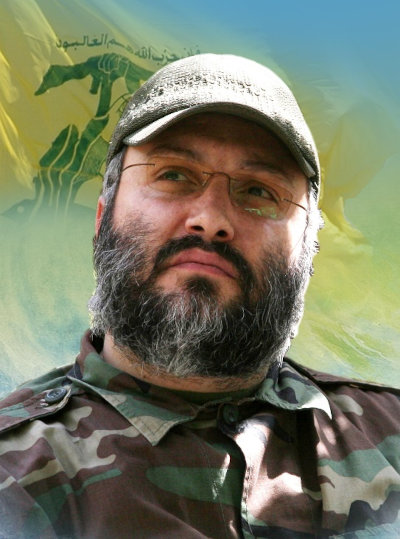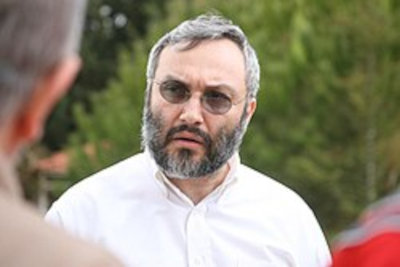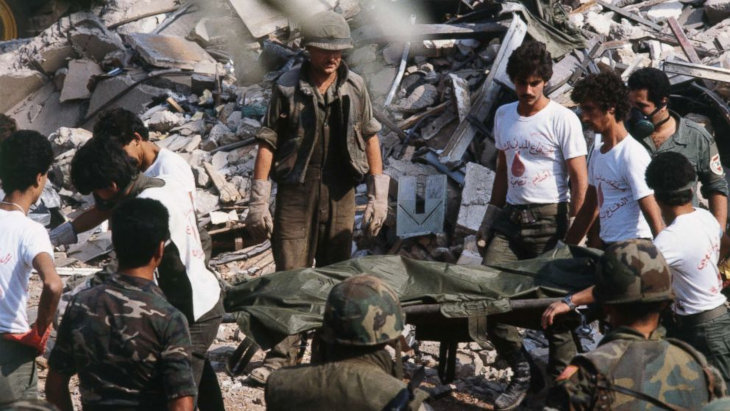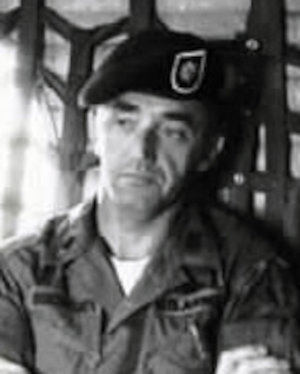 Vampire Weekend's Surprising Jewish Stories
Vampire Weekend's Surprising Jewish Stories


7 min read
The true story behind tracking down Imad Mughniyeh, one of the world’s most wanted terrorists.
Fans of the Israeli spy series Fauda are eagerly awaiting Showtime’s newest spy drama, Ghosts of Beirut, made by Fauda creators Avi Issacharoff and Lior Raz. The four-part Ghosts of Beirut describes the rise of a master terrorist in Beirut, and the grueling years that CIA and Mossad spies tracked him, desperately trying to end his deadly reign of terror across the Middle East.
The series is based on the real-life 20-year manhunt for Imad Mughniyeh, one of the world’s most wanted criminals and – before the terror attacks of September 11, 2001 – the world’s most deadly terrorist.
When Mughniyeh was born in 1962, Lebanon was still a prosperous country. Its capital Beirut was widely known as the “Paris of the Middle East” for its wealth and sophistication. Yet Mugniyah’s family shared little part in Lebanon’s success. They were poor farmers in the south of the country and belonged to the Shiite branch of Islam, which is widely followed in Lebanon’s neighbor Iran (it’s a minority in most other Middle Eastern nations).
 Terrorist Imad Mughniyeh
Terrorist Imad Mughniyeh
Relatives and friends recall Mughniyeh as a charismatic person. “He was a natural entertainer,” one childhood friend later explained to journalists. Even as a child, Mugniyah could command the attention of a room: his friend described watching Mugniyah giving a speech at a family wedding, making jokes and holding the crowd’s attention, even though he was very young. It was a quality that would soon be put to much darker uses.
Political tensions in Lebanon spilled into open civil war in 1975. The 15-year-long bitter conflict pitted various militias against each other, including the Christian Lebanese Front (LF), the Sunni Muslim Lebanese National Movement (LNM), the Shiite “Amal” movement and the newly-formed Palestine Liberation Organization (PLO), led by Egyptian-born terrorist Yassir Arafat; as well as other groups. As a teenager, Mugniyah formed a local fighting group he dubbed the Student Brigade. This band of hardened toughs eventually began coordinating their activities with the PLO. Before long, Mughniyeh became Yassir Arafat’s personal bodyguard, following him around Beirut with a Kalashnikov.
By the 1980s, Mughniyeh began to align himself with a new militia movement with strong ties to Iran that was emerging in southern Lebanon. A theocratic Shiite government had seized power in Iran in 1979, and some Shiite militants in southern Lebanon cultivated ties with the new Iranian regime. Israel, which was fighting Palestinian groups based in Lebanon (and seized control of a buffer zone in the south of the country in 1982), was their common enemy. Iran’s Islamic Revolutionary Guard Corps funded their new Lebanese allies, who soon adopted the name Hezbollah, which means “Party of God” in Arabic. Mughniyeh was a key leader.

The presence of PLO terrorists in Lebanon had seriously destabilized the country, and in 1983, a coalition of international forces arrived there to oversee their withdrawal from Lebanese territory. The international soldiers were housed in buildings throughout the city. One full battalion of US Marines was housed on the grounds of Beirut International Airport. They and the US Embassy in Beirut became Hezbollah’s prime targets.
On April 18, 1983, a suicide driver raced a pickup truck packed with explosives through the Embassy gates and detonated his load. Sixty-three people died - including eight CIA officers - and 120 people were injured. Six months later, Mugniyeh masterminded an even larger attack: on the morning of October 23, 1983, a reinforced truck that was packed with gas canisters pulled up to the US Marine barracks at Beirut’s International Airport. Within minutes, the truck detonated, exploding with a force equal to 20,000 pounds of TNT. 299 US Marines were killed instantly. Moments later, a second blast across the city killed 58 French paratroopers.
 U.S. Marines search for survivors and bodies in the rubble of their barracks headquarters in Beirut, Oct. 24, 1983, the day after a truck with 2,000 lbs of explosives was driven into the building and detonated.
U.S. Marines search for survivors and bodies in the rubble of their barracks headquarters in Beirut, Oct. 24, 1983, the day after a truck with 2,000 lbs of explosives was driven into the building and detonated.
Mughniyeh was a prime organizer of both attacks, and he soon went on to plan attacks on American, Israeli and Jewish targets across the world.
Hezbollah grew into one of the world’s most deadly terrorist groups. Mughniyeh catapulted to the top of intelligence services’ most wanted lists in the European Union, United States, Israel, and elsewhere. Before long, Mughniyeh became the main link between Hezbollah and Iran’s security and intelligence agencies. He also began to organize Hezbollah cells across the world, each charged with carrying out local attacks. Mughniyeh was involved in setting up cells that carried out terror attacks across the world, from Europe to the Middle East to Latin America.
“Hezbollah originated the high-profile Middle East hostage crisis,” explains Matthew Levitt, author of Hezbollah: The Global Footprint of Lebanon’s Party of God (Georgetown University Press: 2013). Various Hezbollah factions kidnapped dozens of victims across Lebanon, often merely to assuage local clans’ grudges and family feuds. In 1984, Mughniyeh carried out his most high-profile – and brutal – kidnapping yet.
 William Buckley
William Buckley
Hezbollah’s 1983 attack on the US Embassy in Beirut wiped out the CIA station there. A new station chief, William Buckley, was dispatched to rebuild the US’s spying capabilities. In March 1984, Mughniyeh – likely working with Iranian intelligence – arranged for Buckley’s kidnapping.
It was an audacious move, and one that made Mughniyeh the CIA’s number one target. The following year, Mughniyeh’s group sent a picture of six Hezbollah hostages to Beirut newspapers: all looked fairly healthy, except for Buckley, who showed clear signs of torture. Another hostage who was held with Buckley later described hearing Buckley retching, coughing and hallucinating. He was tortured by both Lebanese and Iranian thugs, and three separate videos were sent to CIA headquarters, each one more gruesome than the last.
It’s believed that Hezbollah killed Buckley sometime in 1985. (His body was never recovered.) For then-CIA Director, William Casey, Buckley’s murder was an affront to the CIA that the agency could never forgive. The CIA, along with their allies in Israel’s Mossad intelligence agency, hunted Mughniyeh for years.
In 1994, Hezbollah struck again, perpetrating the largest terror attack in Argentinian history. This time, Hezbollah didn’t bother pretending that their motivation was political or stemmed from the Arab-Israeli conflict: they decided to target Argentina’s nearly quarter of a million strong Jewish community. Again, Mughniyeh was the mastermind of the assault.
He spent years planning to kill as many Argentinian Jews as possible. According to information released by the Mossad in 2022, Mughniyeh oversaw the establishment of a brand-new Hezbollah cell in Buenos Aires. Hezbollah agents traveled to Buenos Aires with bomb-making materials hidden in shampoo bottles and boxes of chocolate. Hezbollah-controlled front companies in Argentina and other Latin American countries purchased other materials needed for the attack. For a time, the materials were hidden in a Buenos Aires park.
 The bombing of AMIA Jewish community center in Buenos Aires, July 18, 1994
The bombing of AMIA Jewish community center in Buenos Aires, July 18, 1994
On July 18, 1994, a suicide bomber drove a truck into the Asociacion Mutual Israelita Argentina (AMIA), a popular Jewish community center in Buenos Aires that was packed with people. The truck detonated, killing 85 people and injuring over 300. The following day, the same Hezbollah cell was responsible for the bombing of an internal Panamanian flight, killing 21 people, including a dozen Panamanian Jewish community leaders.
Intelligence agencies identified at least three Hezbollah operatives as responsible, including Mughniyeh. Interpol issued “Red Notices” for their arrest: requests for international law enforcement agencies to apprehend suspects, no matter where they might be. Yet the terrorists - in the parlance of Showtime’s new program, the “ghosts” - remained at large.
In 2008, after nearly 30 years of painstakingly tracking Mughniyeh, intelligence agents from Mossad, the CIA, and other organizations pinpointed his location in Damascus, at a party given by Iran’s ambassador to Syria. Mughniyeh left the party a little before midnight and walked to his car parked nearby. As he approached his vehicle, one of the tires exploded; it had been packed with dynamite and killed Mughniyeh instantly. Hezbollah immediately blamed Israel for his death - a charge which the Israeli government denied.
Showtime says that The Ghosts of Beirut contains an “innovative narrative approach”, weaving in interviews with real-life CIA and Mossad agents about their hunt for Mughniyeh and other Hezbollah terrorists. Viewers may come to understand a lot more about how this notorious mass murderer was hunted and eventually brought to justice.
